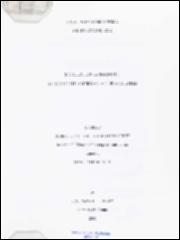| dc.contributor.advisor | Shapiro, Alan | |
| dc.creator | Galvez, Jose Manuel | |
| dc.date.accessioned | 2018-12-17T17:17:03Z | |
| dc.date.available | 2018-12-17T17:17:03Z | |
| dc.date.issued | 2005 | |
| dc.identifier.citation | Galvez, J. (2005). Modulation of Rainfall by the South American Altiplano Lakes / by Jose Manuel Galvez. | |
| dc.identifier.uri | https://hdl.handle.net/11244/316805 | |
| dc.description.abstract | Rainfall over the South American altiplano is modulated via mesoscale circulations induced by diverse land-surface contrasts present over the region. Nocturnal convective storms observed over Lake Titicaca represent 55% of the source of water for the lake. Above-normal lake levels can produce local and remote flooding, sometimes inundating areas as far south as the Salar de Uyuni, the largest dry salt flat in the world. This study focuses on describing the mesoscale circulations and rainfall induced by Lake Titicaca and Salar de Uyuni using observations collected during the South American Low Level Jet Experiment (SALLJEX 2002-3) and simulations carried out using the Weather Research and Forecasting (WRF) model. The study uses seven months of daily rainfall observations, three months of half-hourly infrared satellite data, 12 days of hourly wind profiles from pilot balloons and 3 months of NCEP Global Tropospheric Analyses. | |
| dc.description.abstract | Observations show that the nocturnal convective storms, only present over the lake, produce rainfall rates that almost duplicate the ones measured over the surrounding terrain. The lake- and solar-induced mesoscale circulations produce low-level divergence over both features during the day but late-night/early-morning convergence only over the lake. The period of largest convergence, in phase with the period of maximum frequency of nocturnal convection over the lake according to satellite data, seems to be associated with strong winds that develop over the eastern (western) slopes of the Andes and arrive at the lake (solar) by late afternoon. Composite analyses using satellite data and NCEP analyses indicated that mid-tropospheric above-normal mixing ratios over and east of the altiplano, consistent with above-normal convective activity over the region, were characteristic of the days in which the storms developed. Flow anomalies from the southeast suggest that the moisture source during these events may be located east of the southern Altiplano instead of east from the Lake Titicaca region. Consistent results found with the WRF model suggest that when the mid-tropospheric flow over the Lake Titicaca region is northeasterly, channeling of the flow near gaps in the mountain range to the east produces larger wind speeds over the lake compared to those found when the flow is southeasterly. Strong winds perpendicular to the lake axis seem to maintain the region of low level convergence away from the lake, which suppresses the formation and maintenance of the nocturnal convection. | |
| dc.description.abstract | This study concludes that low-level convergence and moisture play an essential role in the development of the storms, but a moist and weak-wind environment near and over the altiplano boundary layer appears to be necessary for their development and maintenance. These factors, periodically present over the lake region during the rainy season, do not occur over the solar. Changes in the solar surface properties coupled with changes in the large-scale circulation pattern may be necessary for nocturnal convective storms to develop over the solar. | |
| dc.format.extent | 121 pages | |
| dc.format.extent | 2,235,303 bytes | |
| dc.format.medium | application.pdf | |
| dc.language | en_US | |
| dc.subject | Rain and rainfall -- Bolivia | |
| dc.subject | Convection (Meteorology) -- Bolivia | |
| dc.subject | Altiplano | |
| dc.subject | Titicaca, Lake (Peru and Bolivia) | |
| dc.subject | Meteorology, School of | |
| dc.title | Modulation of Rainfall by the South American Altiplano Lakes | |
| dc.type | text | |
| dc.contributor.committeeMember | Douglas, Michael W. | |
| dc.contributor.committeeMember | Fedorovich, Evgeni | |
| dc.contributor.committeeMember | Leslie, Lance | |
| ou.group | College of Atmospheric and Geographic Sciences::School of Meteorology | |
